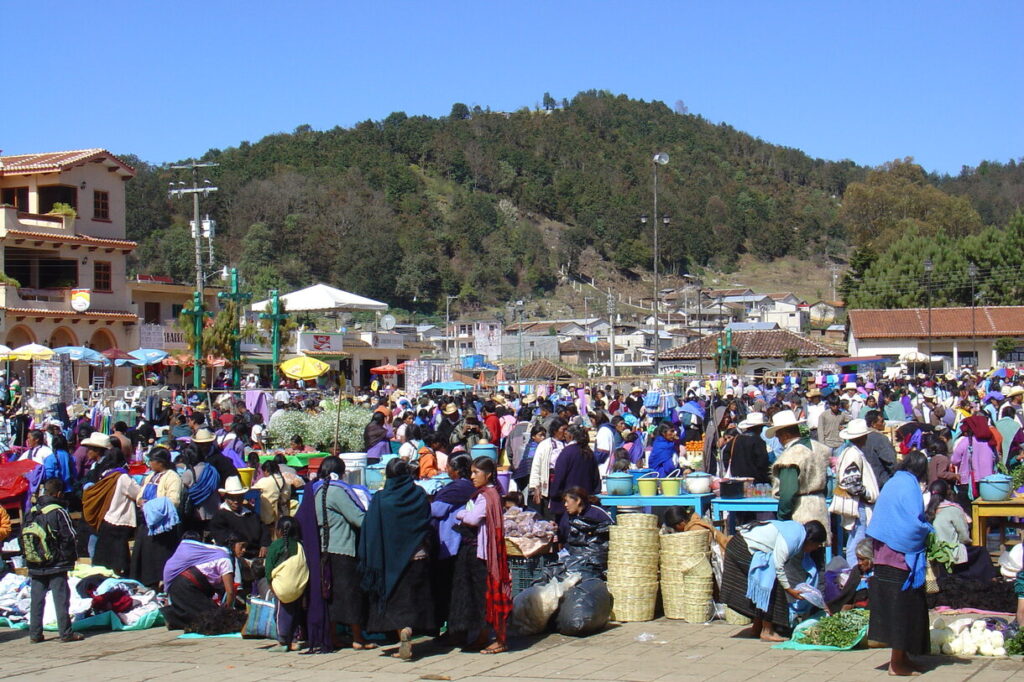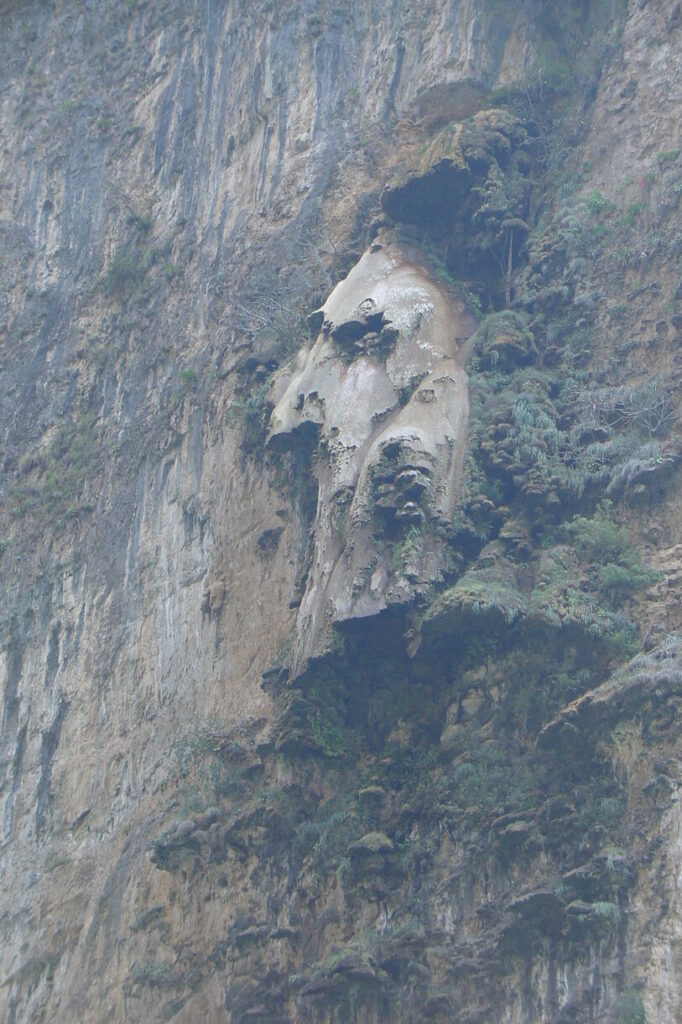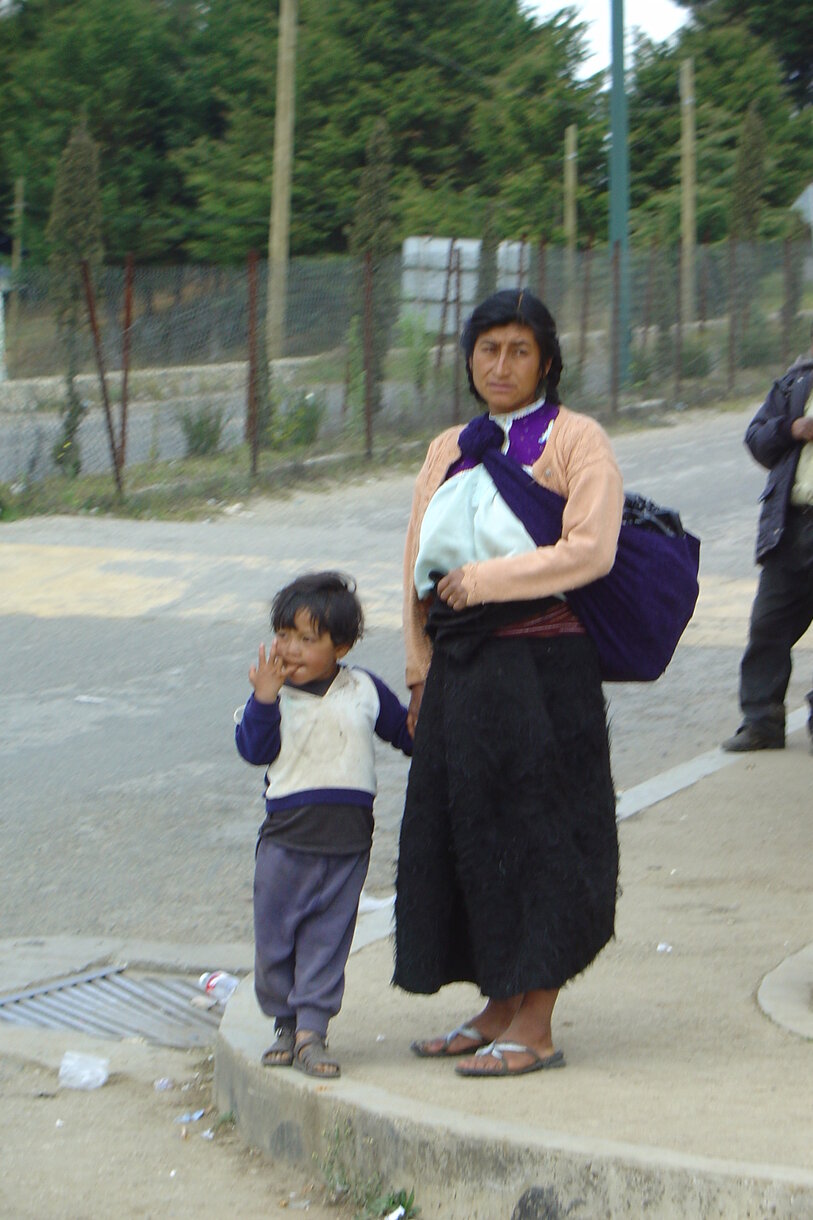Chiapas – Land of Mayan Mysteries & Colonial Charm
We arrived in San Cristóbal de las Casas, a magical city in Chiapas where time seems to slow down. Our cozy hostel cost just 45 pesos per night with breakfast – a steal in this colonial gem designated as one of Mexico’s “Pueblos Mágicos” (Magical Towns) in 2003.
Founded in 1528 by Diego de Mazariegos, San Cristóbal enchanted us. The leafy Zócalo main square, framed by colorful colonial buildings and the cathedral, offers perfect people-watching. At the city’s edge, we discovered an exotic market where Tzotzil and Tzeltal vendors sell traditional foods, fresh fruit, and handwoven textiles – a vibrant sensory experience.
San Juan Chamula – Where Catholicism Meets Shamanism
On Sunday, we took a tour (120 pesos) to San Juan Chamula, famous for its unique religious syncretism. Our English-speaking guide, an anthropologist from Mexico City, passionately explained Tzotzil traditions.

We began at the hillside cemetery – a place rich in symbolism. Color-coded crosses marked ages at death: white for children, blue for adults, black for elders – echoing pre-Hispanic Mayan beliefs. The view revealed a seemingly typical Mexican village hiding profound secrets.
The Sunday market was a cultural spectacle. Mountain villagers wore traditional dress – men in wool ponchos, women in embroidered blouses and black wool skirts. Surprisingly, they drank Coca-Cola enthusiastically – locals believe carbonation helps “expel” evil spirits through burping.
St. John the Baptist Church astonished us. The floor covered in pine needles, hundreds of flickering candles, no pews but life-sized saint statues adorned with mirrors. Our guide explained the mirrors allow “direct communication” with saints. Most striking was the main altar featuring John the Baptist (the village patron) instead of Christ crucified – testament to their unique Catholicism.
Priests only visit for baptisms – daily religious life is led by shamans (curanderos) blending Christianity with indigenous beliefs. We witnessed healing rituals using chicken eggs and live poultry to diagnose illnesses believed to originate in the soul. They particularly fear witchcraft and the “evil eye.”

Sumidero Canyon – Chiapas’ Dramatic Landmark
The next day we visited Sumidero Canyon (160 pesos), one of Mexico’s natural wonders. These 1,000-meter cliffs along the Grijalva River formed 12 million years ago. For locals, it holds historical significance – legend says in 1524, hundreds of Chiapa Indians leaped to their deaths here rather than surrender to Spanish conquistadors.

Our riverboat tour revealed crocodiles, howler monkeys, and countless bird species. Most spectacular was the “Christmas Tree” – a natural rock formation with cascading waterfalls, especially impressive during rainy season.
An Evening in Real Mexico
Waiting for our night bus to Palenque, we spent the evening at a local pool hall – an unusual spot for tourists. Over beers and pool games, locals shared insights about Chiapas’ complex history, the 1994 Zapatista uprising, and current regional challenges. This was authentic Mexico far from tourist brochures.
Chiapas proved to be Mexico’s most authentic and fascinating region – where Mayan traditions thrive in daily life, Catholicism intertwines with shamanism, and dramatic history coexists with breathtaking nature.

Leave a Reply